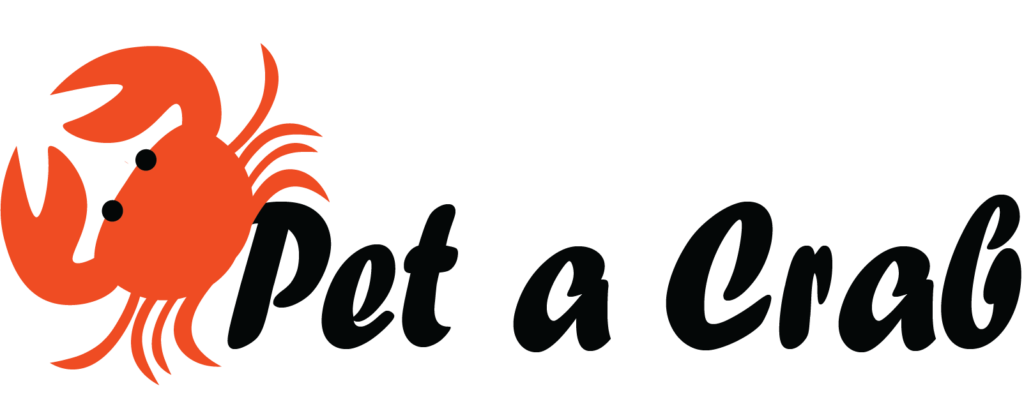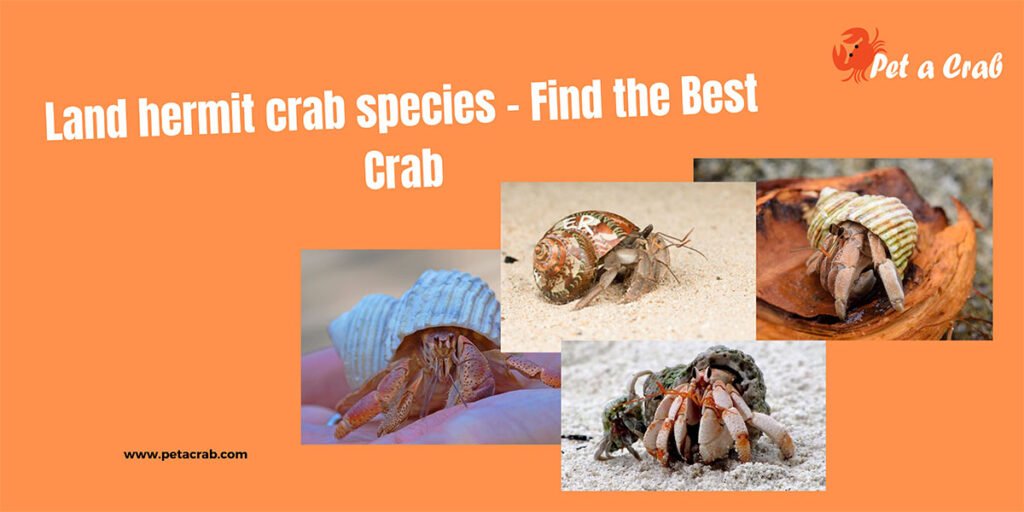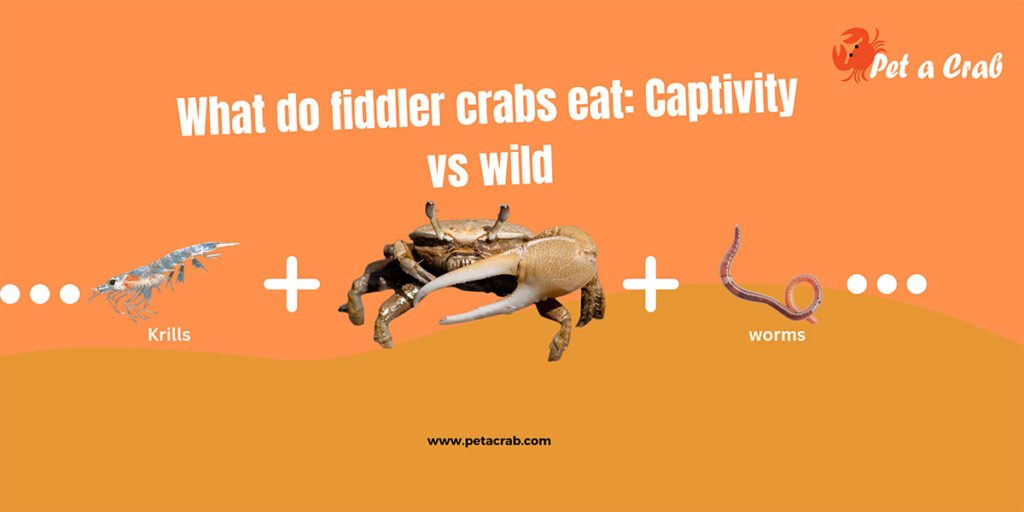The gorilla crab, an uninvited visitor to the aquarium that many aquarists face. This crab is a nuisance and considered a pest of the corals, as they destroy corals and live rocks with their strong claws.
If you are reading this article, it indicates that you have encountered the gorilla crab in your aquarium and are unsure of what to do. You may also wish to pet the crabs or learn more about them so that you can be cautious in the future. Keep reading this article; you’ll know everything about the gorilla crab.
Quick overview of gorilla crabs
| Common names | Gorilla crab, Furry coral crab. Hairy brown crab, Mud crab, Pebble crab, Rubble crab |
| Scientific name | Xanthidae (family) |
| Temperature | 23°C–29°C (73°F–85°F) |
| Social | No |
| Sleeping nature | Nocturnal |
| Max Size | Up to 4 inches with legs |
| Lifespan | Up to 3 years |
| Color | Brown, Red |
| Diet | Omnivore |
| Reef safe | No |
| Temparament | Semi agressive/agressive |
Gorilla crab facts
What is gorilla crab?
The common term gorilla crab is used for a lot of species that fall under the family Xanthidae. Generally, they are hitchhiker crabs that come with live rocks or corals that cause nothing but harm to the aquiraium.
The Xanthidae family has hundreds of species in 170 genera across the globe. So there is no specific identification of species for gorilla crabs. However, not all of the species from the xanthidae family are pests; there are many good species like the pom pom crab and genus like Tetralia, which has a symbiotic relationship with corals.
Note 1: The reason for disappearing your coral may not be the gorilla crabs; check for other reasons.
Note 2: Someone on the internet (I can’t recall) claimed the species of gorilla crab is Pilumnus vespertilio.
Where do gorilla crabs live?
Gorilla crabs make their homes in warm coral reefs and rocky shores, tucking themselves into little cracks and crevices. Sometimes, they sneak into home aquariums by hitching a ride on live rock or corals.
How to identify gorrilla crabs
It is important to know what gorilla crabs look like before getting rid of this one because you might end up removing a harmless species that might be useful for your aquarium or a new collection of another species.
Appearence
The gorilla crab has a rounded, hairy (Setae) body, including their legs and claws; the legs and claws kind of resemble gorillas, where their name comes from. Their color is usually brown to reddish brown and they have black tips on their pointy pinchers. Eyes can vary from blue, whitish, dark, to red.
They grow really quickly, devouring the surroundings, and can grow up to 4 inches with their legs.
Mostly their color resembles the color of the rock where they live, which helps them to camouflage; that’s why you might have a hard time to find them even though they were in front of you.

Behavour
Gorilla crabs are peaceful and cute when they are young and do not harm the corals; their movement is interesting as well as eye-pleasing to watch. That’s why most of the aquarists don’t have the heart to kill them.
They become aggressive and destructive as they grow, like destroying corals, eating fish, or any other anemones and invertebrates. Another interesting thing is that gorilla crabs lose their heir as they grow.
Once they choose a spot, they make it permanent; as they grow, they’ll make the hole big enough to fit them by scraping the live rock or coral.
Gorilla crab vs. Emerald crab
The pincher of emerald crab is more rounded, has no hair on the body, is green and does not pose any harm to the corals. On the other hand, the pincher of gorilla crab is kind of pointy and has hair all over the body, which is wider but not bigger than that of emerald crab.
Are gorilla crab reef safe?
Gorilla crabs are not reef when they are adults. However, the younger ones rarely harm the corals or any other species.
Note 3: Gorilla crabs are mostly interested in Acropora corals.
Do they have any good sides?
Certainly they have. It turns out that Joseph Pollock, a researcher, discovered something surprising about those pesky coral-eating crabs. While they can be a nightmare in our small aquariums, causing all sorts of problems, they actually play a helpful role on big coral reefs. These crabs munch on the dying or diseased parts of coral, almost like cleaning up the mess, which helps protect the rest of the coral. So, even though they’re troublemakers in our tanks, out in the wild, they’re like little reef doctors, doing more good than we might have thought.
Are they poisonous?
Yes, gorilla crabs are poisonous, and it will be stupid if you try to eat one, as cooking can’t destroy their toxin. However, they are not venomous and are safe to touch. Their toxin, which is similar to the neurotoxins of pufferfishes, is so deadly that it can lead to death and still now there is no antidote invented. The poisons are produced by the bacteria from the genus vibro which live in symbiosis with the crab.

How to get rid of gorilla crabs
They move very slowly most of the time, but when you try to catch them, they get very fast, making it difficult to catch them. Here are some effective methods of catching them:
- I think using a fish net or a cup is the effortless way to catch them. The gorilla crabs are nocturnal, meaning they’ll come out at night when lights are off. So make sure the lights are off and use a blue or red light while you catch them.
- Using the popular trap of the internet: Take a plastic bottle and cut it half. Now invert the funnel part into the lower part of the bottle. Place some brine shrimp or any other food as a bait, and place the trap near the crab’s hideout. If the crab goes into the bottle, it won’t be able to come out.
- Found an effective method on the internet: grab a whiskey glass or any small container about 3 inches deep. You’ll also need a frag plug (a small object to attach bait), a rubber band, and some shrimp from the store. Set the glass at an angle against a rock near the crab’s hiding spot, keeping it mostly upright. Take a small piece of shrimp, attach it to the frag plug with the rubber band, and place it at the bottom of the glass. The crab will go in for the food but won’t be able to climb back out. Do this at night when the tank lights are off. Replace the shrimp daily to keep it from rotting and adding too many nutrients to the water. It should only take a night or two to catch the crab. Once it’s in the glass, you can safely remove it from the tank and decide what to do with it. This method has worked for catching lots of crabs.
- Catch it with tools like tongs or spears.
- If nothing is working or you are not sure if there is any gorilla crab in the coral. Just remove the infested coral and dip it into tap water. Immediately, the crab will come out.
Note 4: If you have encountered one gorilla crab, there is a high chance there will be another crab. So make sure no crab is left.
Note 5: You can prevent the whole mess by dipping new live rocks or corals into the solution first. Gorilla crabs can survive even when the rocks are dry.
Tip:Mantis shrimp eats gorilla crab
Tip 2: If you don’t have the crab but you want them, you can easily find them in online stores.
What to do after removing from the main tank? Well, most aquarists suggest keeping them in the sump if you have; they’ll eat algae and live only depending on that without any food. My suggestion is to give food once in a while. In case you want to make a separate setup and care for the gorilla crabs, here is the guide for you.
Gorilla crab care
Tank setup for your gluttony (gorilla crab)
- Size: You can keep only one species in a tank (no tankmates). Choose a nano tank (5 to 10 gallons) with a lid.
- Substrate: Use sand substrate as usual; substrate doesn’t need to be thick as they don’t burrow.
- Other equipment: filter, thermometer, etc.
- Water parameter: temperature: 23°C-29°C, dkh: 8-12, pH: 8.1-8.4, sg: 1.023–1.025.
- Corals: Provide them their favorite coral acropora. If you can’t afford coral or live rock, place normal aquarium rock; there should be no problem.
What do gorilla crabs eat?
Gorilla crabs will eat everything as they are omnivorous; they have records of living several months without food only depending on the algae and debris in the tank.
Consider giving them fish flakes and crustaceans’ food, raw meat, vegetables, fruits, brine shrimp and bloodworm.
Related article – Magical blood of horseshoe crab



Have scientists discovered any evidence to suggest that gorilla crabs are at the top of the food chain in their underwater habitats, dominating other species with their size and strength?”,
“refusal
??